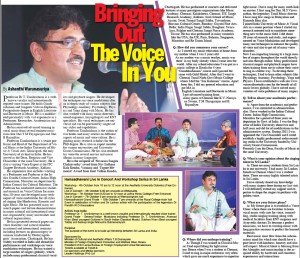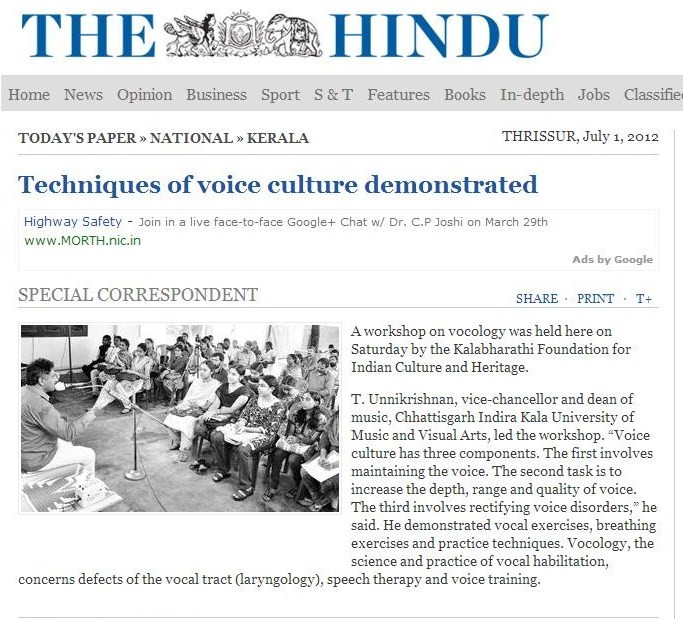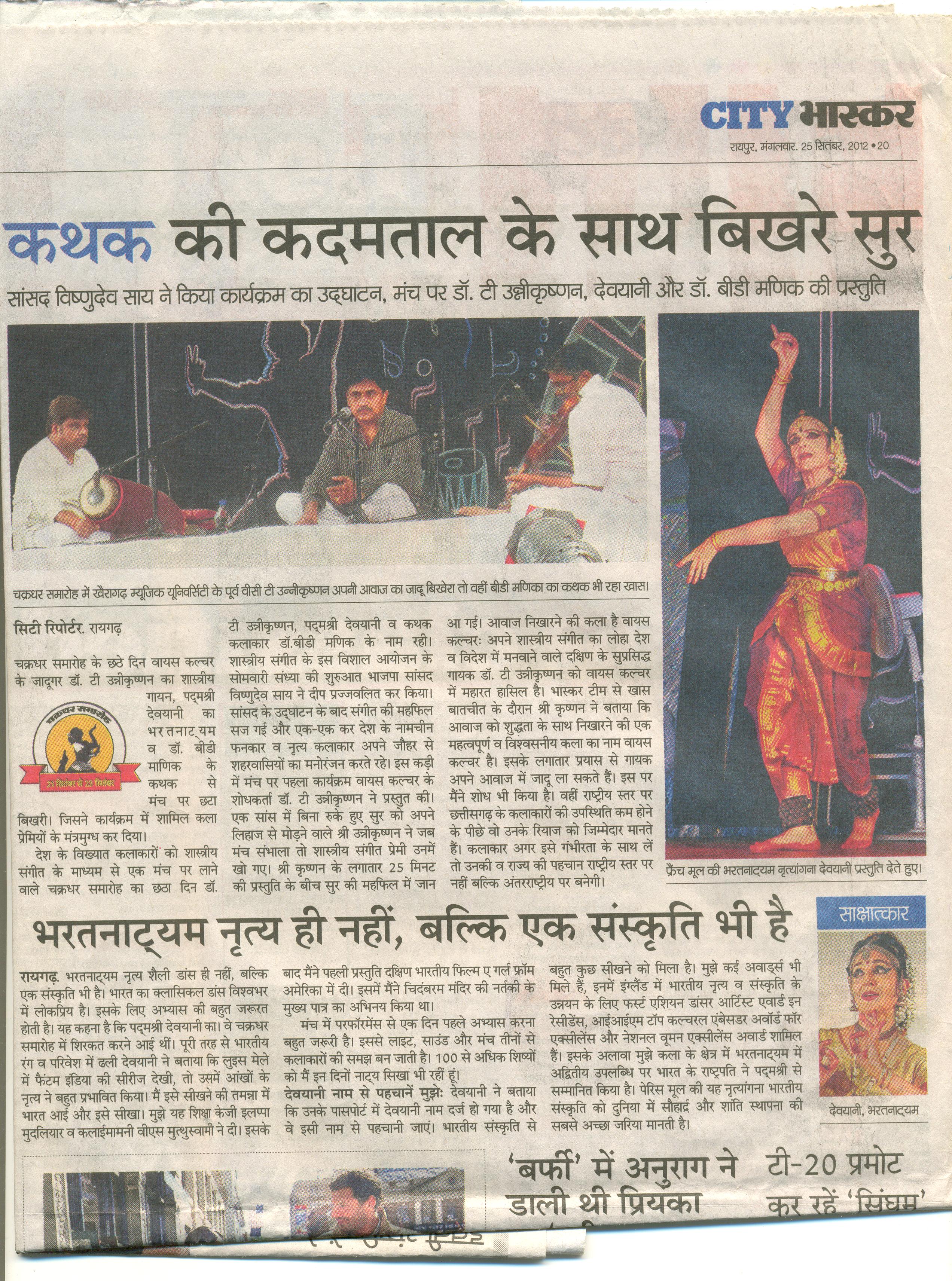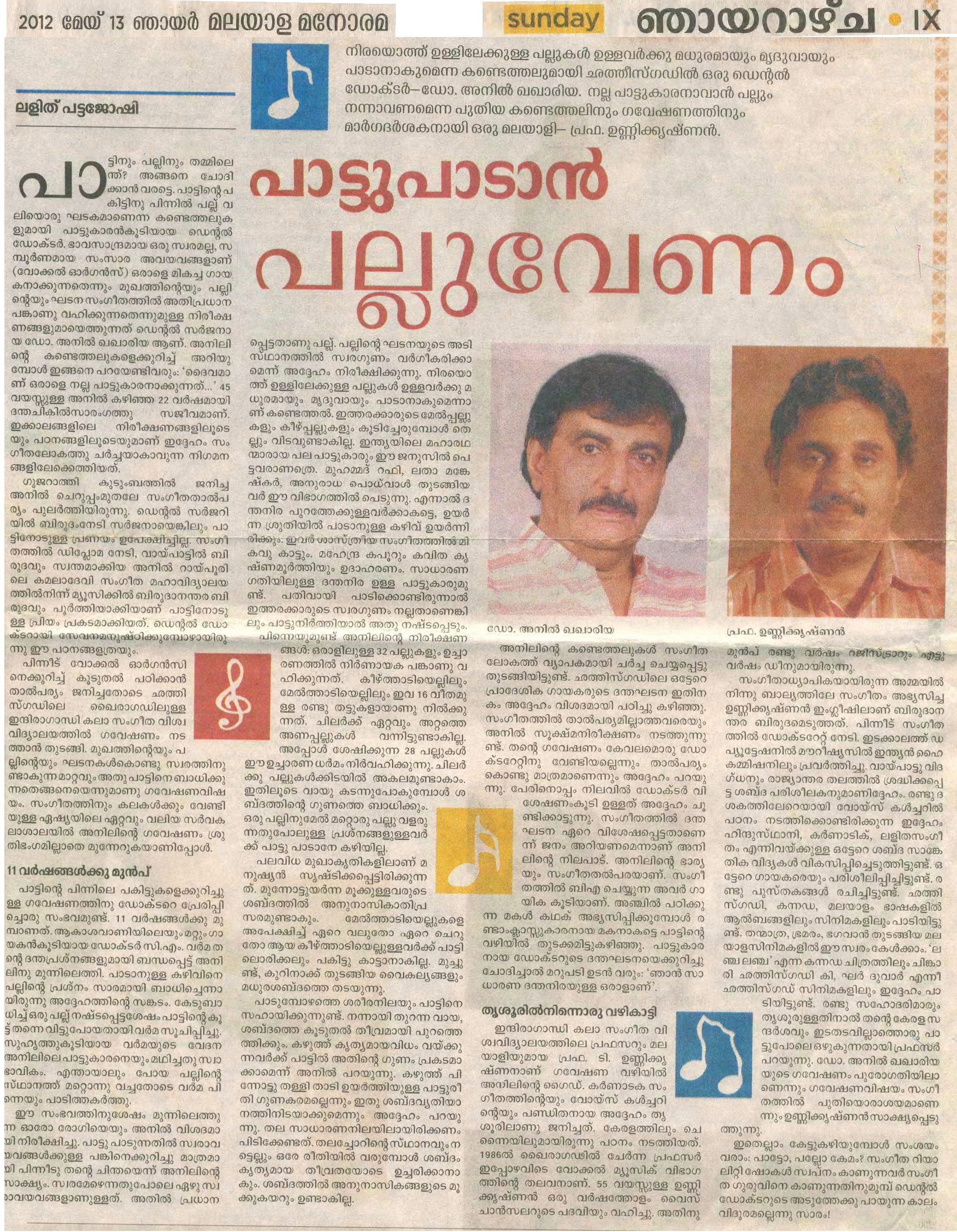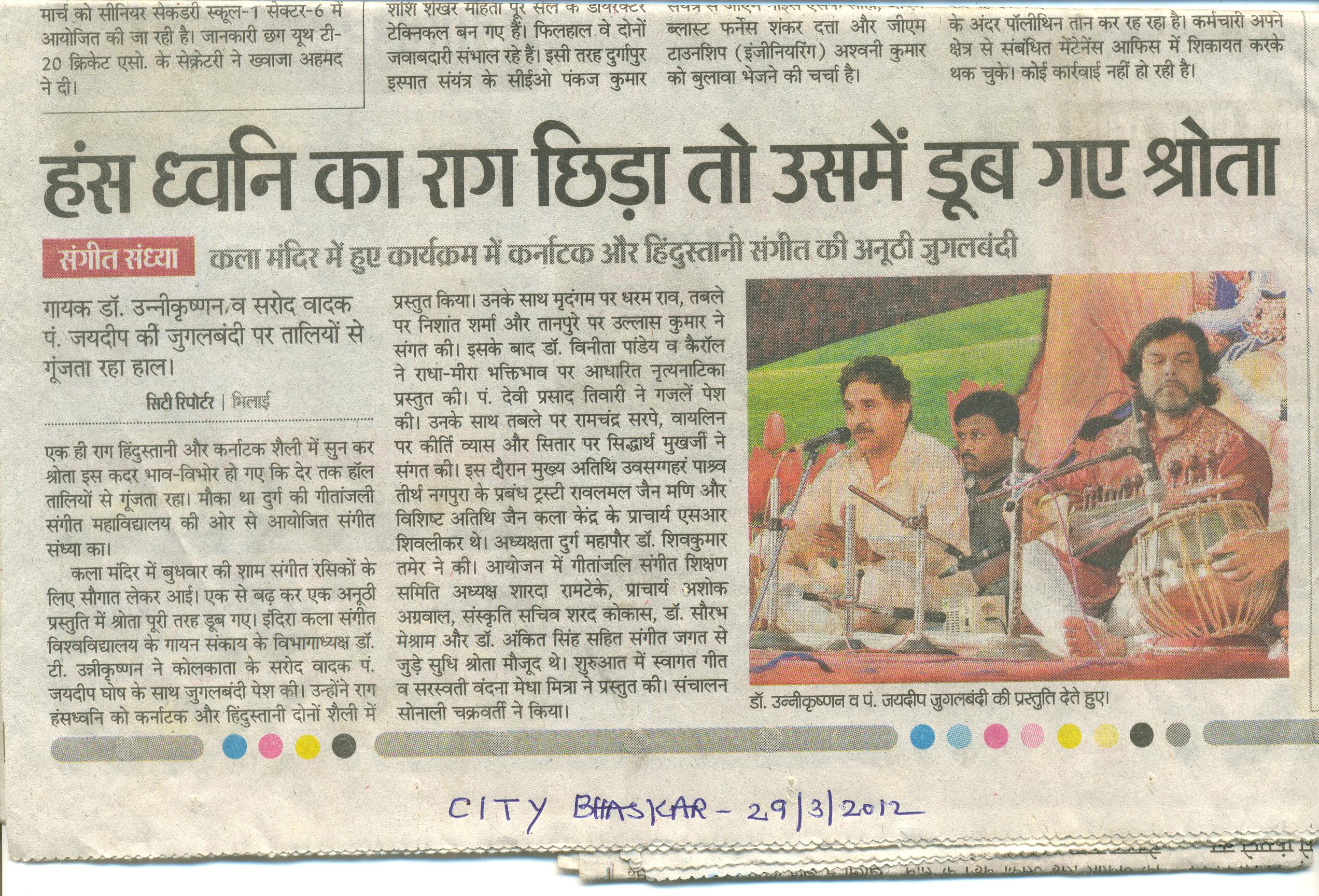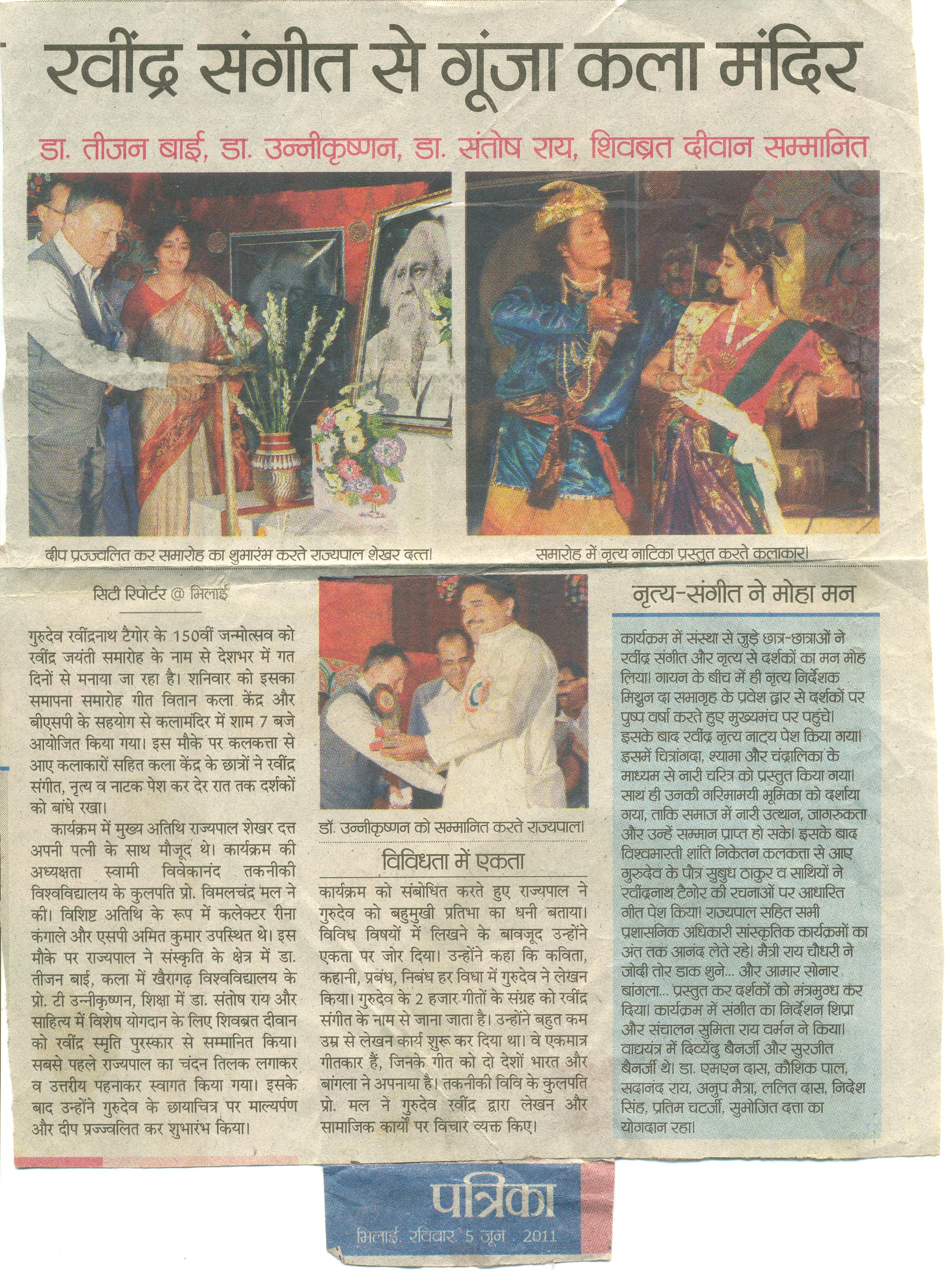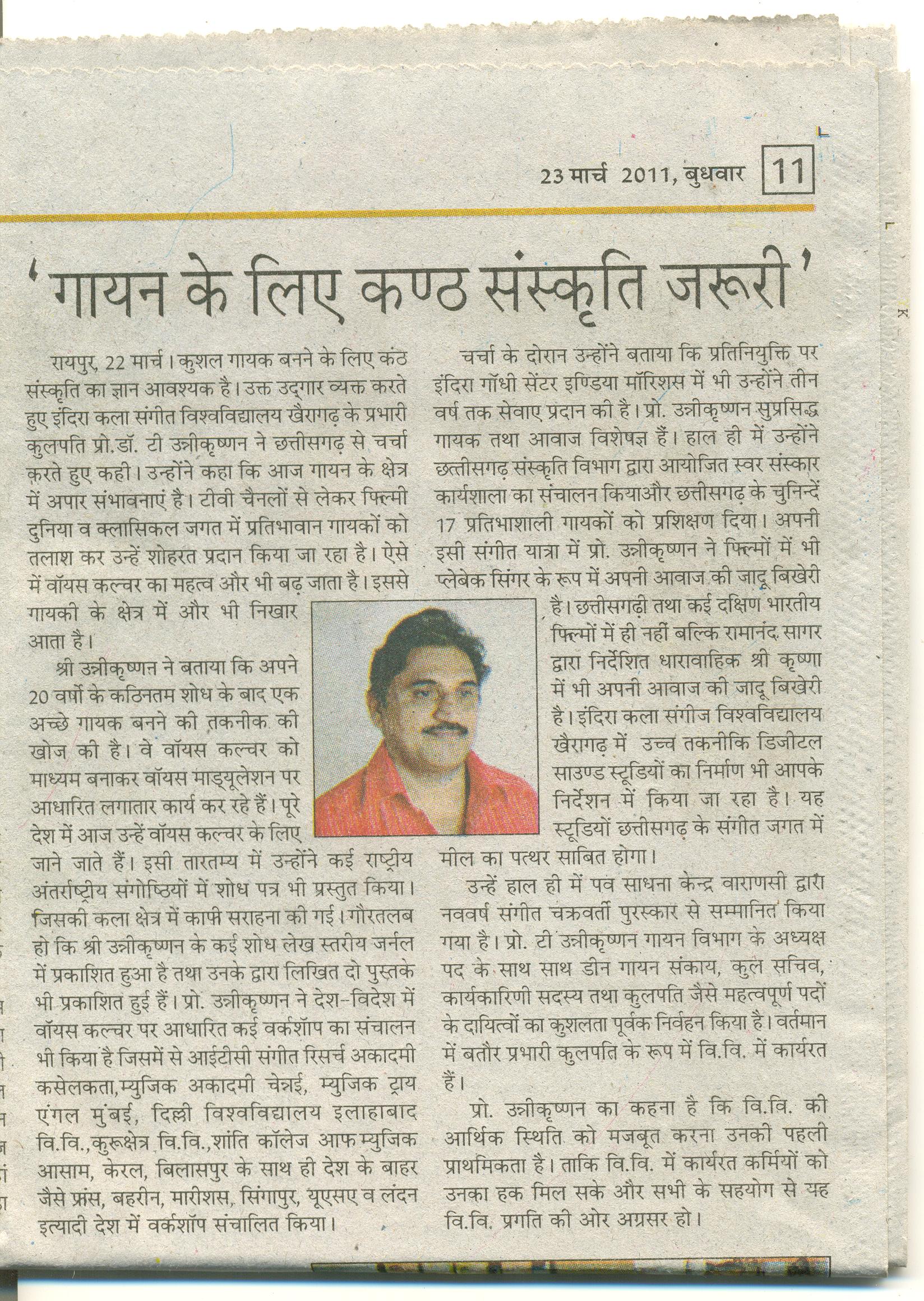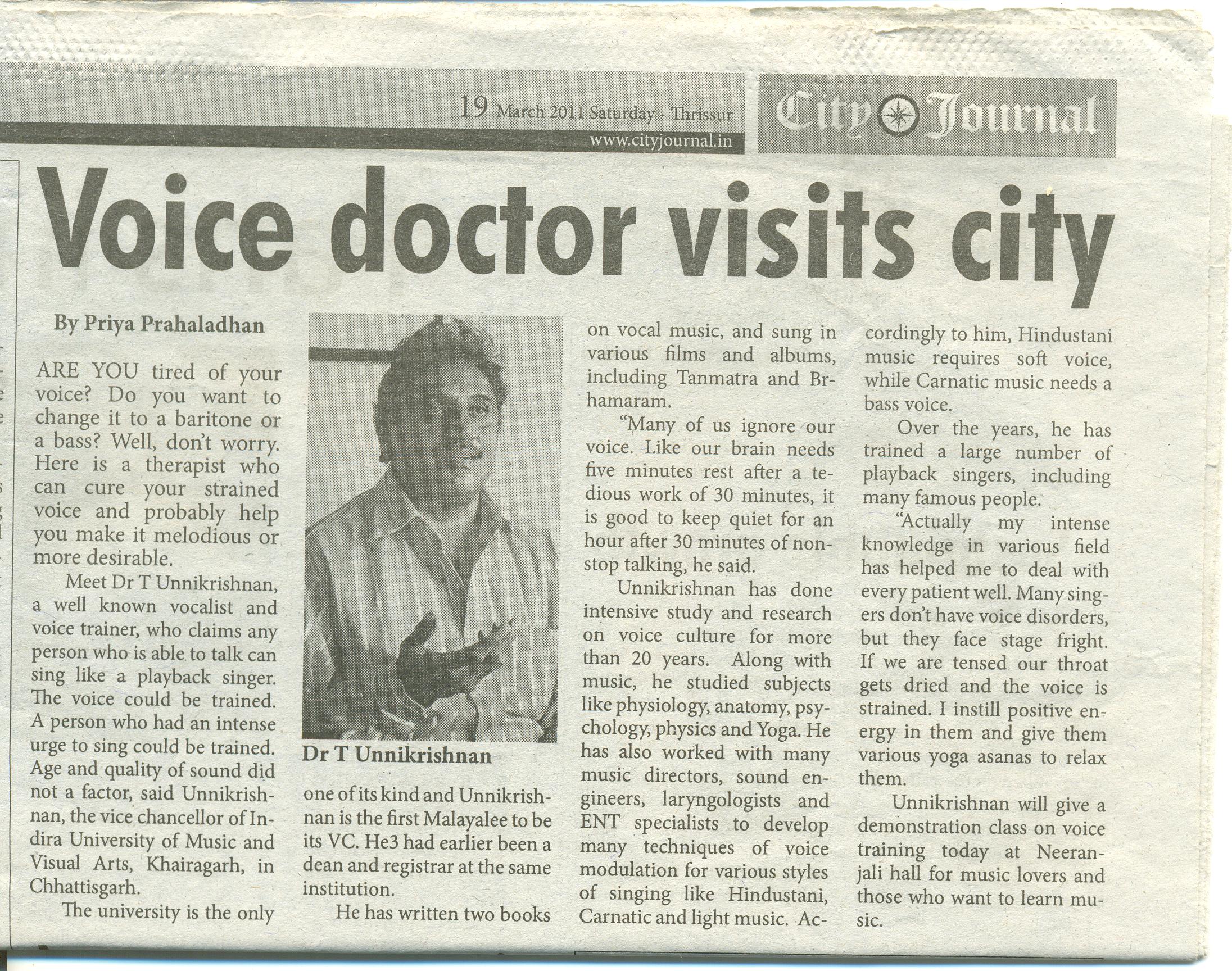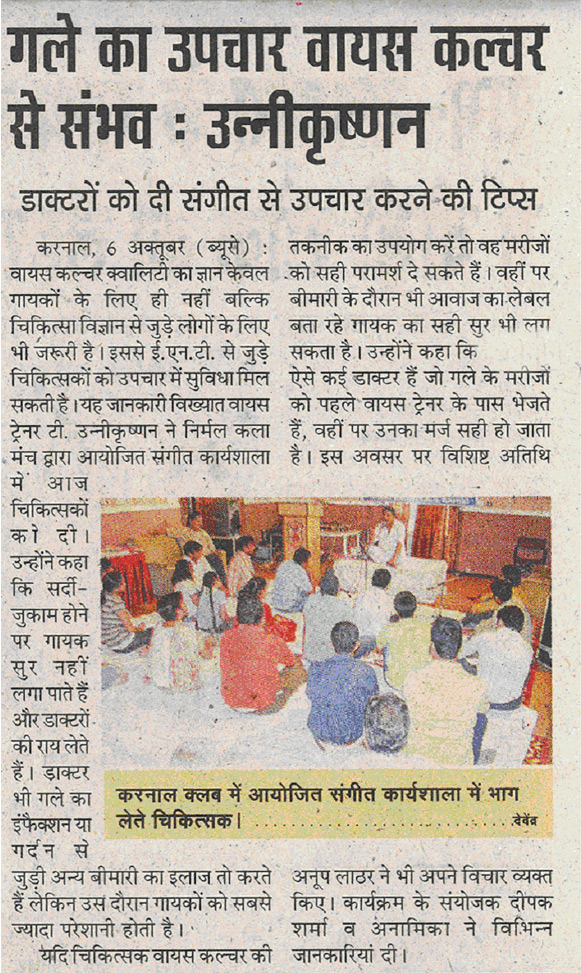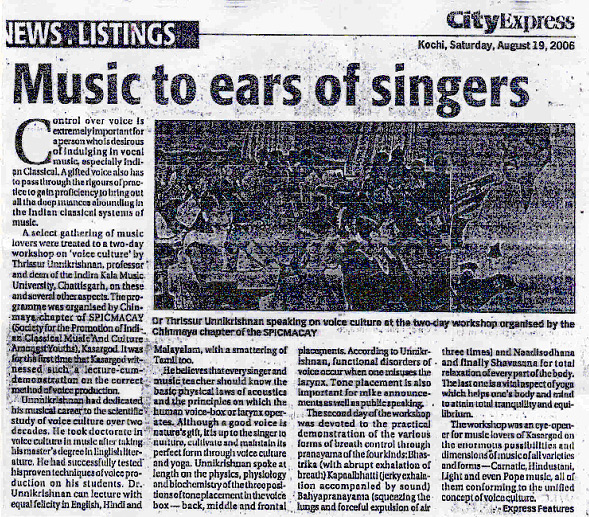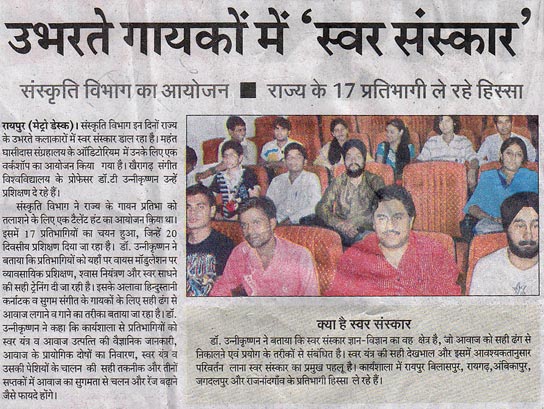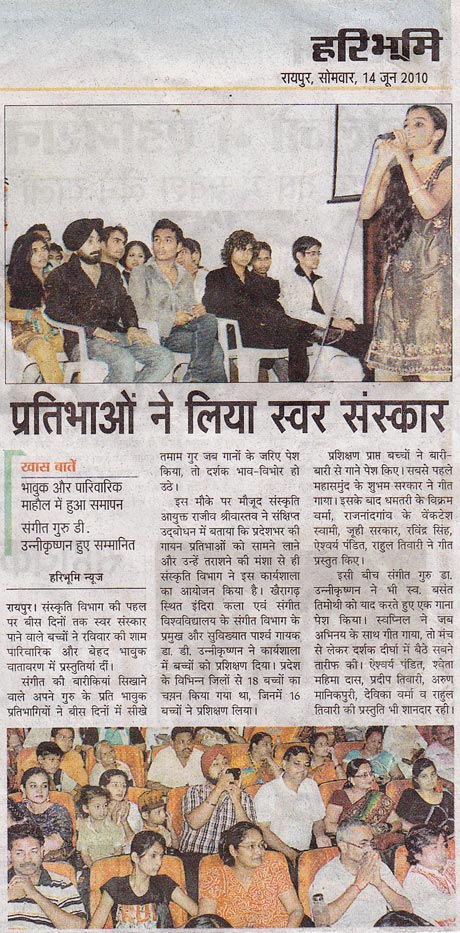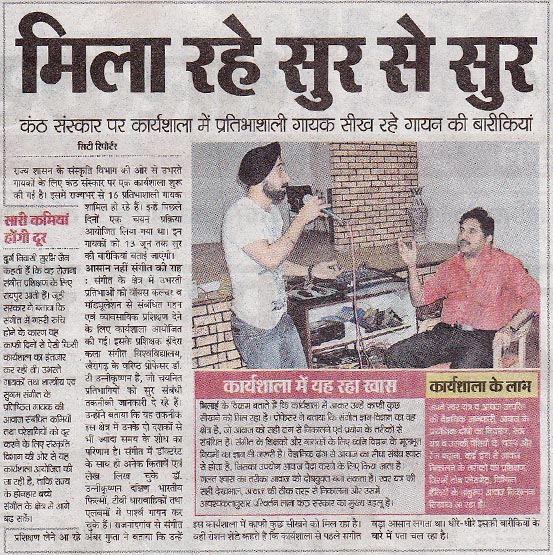Matrubhumi Daily – Trivandrum
21 March 2019
09 August 2016
Faridabad Review
Faridabad Review
09 August 2016
Calicut Press Review
September 2017
Hamsadhawani Live In Concert And Workshop Series In Sri Lanka
4th October 2014
The Hindu
1 July 2012
Online edition of India’s National Newspaper: Friday, February 05, 2010
LEC-DEM Dr. T. Unnikrishnan spoke about disorders pertaining to the vocal chords and how singers can prevent them.
Voice Disorder and Remedy’ is probably one of the most critical topics to throw light on the principal piece of vocal music. Dr. T. Unnikrishnan, Dean, Faculty of Music, Indira Kala Sangita Vishvavidyalaya, Chattisgarh, presented an interesting lecture demonstration on this topic for Sri Parthasarathy Swami Sabha at Vidyabharati, Mylapore.
Dr. Unnikrishnan touched upon the medical, musical and practical problems faced by musicians and suggested how these could be remedied. Starting with some common problems faced by musicians such as strain in the voice, breathlessness, dryness and an uneasy sensation leading to frequent clearing of throat, he classified the disorders into two categories: organic and functional.
Organic disorder, Unnikrishnan said, is mostly due to medical problems including infection, thyroid, tonsils, sinusitis and bronchitis, and even genetic. This disorder needs medical intervention. Functional disorders are mainly due to wrong usage of throat resulting in hoarseness. Nodules (similar to pimples) can be formed in the vocal chords and if not attended to at once, can lead to voice damage, Unnikrishnan warned. Air pressure applied through the diaphragm from the abdomen and the lungs creates a vibratory effect of sound waves through resonator chambers, he explained. When the vibration passes through the various chambers of the resonators which act more or like the sound mixtures provided to the human body by nature. How one channelilses the sound through these resonator chambers is what matters.
Some causes
Energy, space behind the tongue and depth decide voice power. Singers, announcers, speakers and choreographers use their voice to a great extent. The upper respiratory track can be affected by air pollution, sinusitis and cancer.
According to the speaker, functional disorder occurs in many cases because of incorrect ways of breathing, lack of practice and lack of knowledge about the importance of maintaining the vocal chords. Wrong way of applying air pressure is the main reason that cause improper vocal loading, he added.
Dr. Unnikrishnan said in the West, singers generally never use their voice for different styles as we do in our system. If a singer sings in soprano or bass, for an opera or a chorus, they just stick to that. In India, as singers use their vocal chords for different types of singing, it needs more attention.
Control techniques
Chest voice is the normal one and that should be used optimally by one and all, was his advice. Open throated singing is recommended for youngsters to discover their range, and this should be done optimally and carefully. That is the first level of control. The second level is to keep the same air pressure but use it according to the way one needs to sing. Unnikrishnan demonstrated by singing an open throated raga Khambhodi (‘Maragatha Valleem’). He also sang Chalanatta (‘Yedayya Gati’) and Ritigowla (Dwaitamu Sukhama’) which do not demand too open throated singing; a softer or optimal touch can bring out the best.
The third level is singing bhajans and Hindustani where, he said, one has to reduce the air pressure. To explain this, he sang Brindavanasaranga. The fourth level is light music where depth of the voice should be maintained but pressure and volume have to be reduced even while reaching the upper registers. The fifth is the use of falsetto by reducing more than 50 per cent of the pressure and singing with low pressure on the voice. However, the speaker said open throated and falsetto singing has to be practised for short times only.
On the remedial side, Dr. Unnikrishnan believed correct breathing and proper modulation of voice can help a lot. How the sound emanating from the resonators is thrown out intelligently is what decides the depth of a person’s voice.
Fixing the pitch according to the voice is essential, he felt, and clarified that one has to keep the pitch at his/her own comfortable level. Pranayama, regular practice, diet control, abstaining from heavy and unwanted medication and avoiding cloves or peppercorn can help a singer gain good lung power. He recommended drinking warm water and protecting the body from dehydration also.
Online edition of India’s National Newspaper: Friday, Jan 02, 2009
Dr. T. Unnikrishnan gave a talk on the influence of yoga on voice modulation. He made those present aware about the subject of voiceculture — the right method of voice production in all styles of music. He also mentioned how voice disorders do exist and proper yoga techniques can be used as remedies to get over these problems. He however cautioned that all yoga techniques have to be adopted only under the able guidance of an expert.
He said that there are three basic pillars in the production of the voice and these aspects concern phonetics, resonance and the respiratory system. He said that the voice analysis of many singers has shown him how they exert excessive pressure that would only cause immense strain on the voice.
Three registers
He also demonstrated how there are three registers from which the voice is produced chest, head and false and recommended the use of all these as that would help in proper landing of the voice and also result in tremendous improvement in voice-quality.
Any yogic breathing, after due consultation could follow a pattern where the principle of long breathing should be followed with proportional changes in inhalation and exhalation, leading to a gradual way of learning the method of retaining the breath inside the system.
A thumb rule for those who care about their voice could be the method of quick inhalation and regulated exhalation. This should influence your voice and the ultimate aim should be a golden voice that would be like a tightened string.
Dr. Unnikrishnan recommended three breathing techniques Kapalapathi, Nadi Shodhana and Bhasthrika for the best musical sound.
Online edition of India’s National Newspaper: Friday, Dec 28, 2007
CONFERENCE The morning sessions at the Music Academy deal with interesting subjects.
Vocal quality
On December 20, T. Unnikrishnan dealt with “Voice Culture in Hindustani and Carnatic music. He traced the importance of voice culture from the days of Natya Sastra and later treatises. Musicians should not just read it as theory, but understand the necessity to retain quality voice. He enlisted some techniques of voice production. One should use the anatomy and physiology of voice. The three components of voice production are resonatory, phonotory and respiratory; which help in relaxing the muscles and ligaments of the larynx, give energy for singing and ability to manipulate effectively to get the required voice. He drew a distinction between amateur singing, professional singing and folk singing.
Though not trained, professional singers have their own ways of maintaining their voices and the folk singers have their natural ways of modulations. He talked mainly of three voice registers. He explained with demonstrations both in the Carnatic and Hindustani styles and offered tips to gain ability to sing in three octaves. By constant practice, careful tonal placement, pranayama and adherence to the basic principles of voice culture, a singer will easily be able to sing any kind of music, he said.
City Bhaskar
25 September 2012
Malayala Manorama
13 May 2012
City Bhaskar
29 March 2012
Patrika
05 June 2011
23 March 2011
City Journal
19 March 2011
KARNAL KESARI
Tuesday, 7 October 2008
Hari Bhumi Raipur
Sunday, 3 Janvary 2010
Nayi Duniya Raipur
Wednesday, 2 Jun 2010
Hari Bhumi Raipur
Tuesday, 15 Jun 2010
Dainik bhaskar Raipur
Wednesday, 2 Jun 2010





